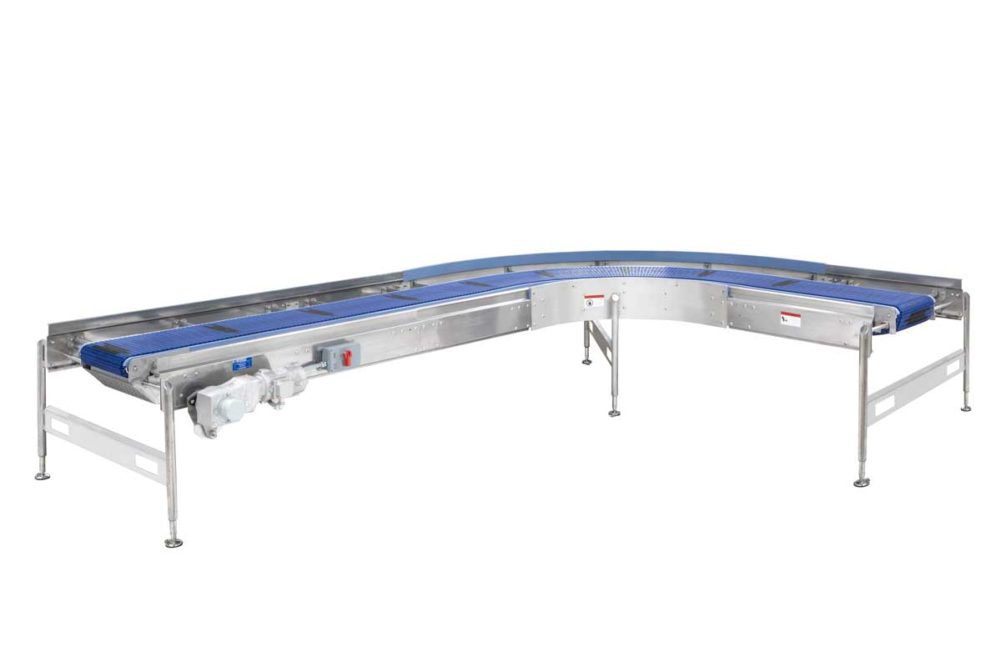Moving baked goods from one conveyor to another can be a tricky proposition. That’s especially true with crackers and cookies, where all transfers must be extremely precise to prevent damage. To keep everything marching in an orderly fashion, the process often requires extremely small, sharp nose bars, which may have a detrimental impact on the life of the belt.
“To alleviate this, we reduce the belt tension and where practicable increase the angle of the return belt path — both of which reduce the transfer point load on the belt and extend life expectancy,” noted Andy Green, technical development manager, Spooner Vicars Bakery Systems, a Middleby Bakery company. “For baked products, the transfer is less critical and typically small-diameter live-roller nose bars are employed to maintain accurate product regimentation, which also reduce the overall load on the conveyor.”
Helen Xi, bakery and snack business development analyst, Intralox, pointed out that pizza crusts, croissant dough and other delicate products require a tight nose bar transfer to ensure dough quality and product integrity prior to baking. Small, bite-size items, she added, often get stuck between transfers, creating logjams and unnecessary debris.
“We’ve all seen the mini-cookies, mini-muffins or mini croissants in grocery stores, and all those products need a good, tight transfer between different conveyors to ensure the products’ quality,” she said.
Product diverters also play a crucial role in automation.
“In a typical bread plant, a diverter needs to handle about 120 to 150 loaves per minute, and it runs three shifts for two weeks nonstop,” Ms. Xi observed. “Every minute of unscheduled downtime costs plants a lot of time and money to fix it. The old technology could be a headache for the plant. The future diverters we’re working on are well suited for hygienic design with easy-to-replace spare parts and suitable to work in an abrasive, oil environment.”
Make sure to position all diverters, transfers, and scrapper bars correctly so they do not get damaged by contacting other conveying equipment.
“If you have a scrapper bar or diverter touching another belt, you’re going to have wear,” said Jonathan Lasecki, director of engineering, Ashworth Bros. “You want to adjust so they don’t make contact but move all of the products you need from one belt to another.”
This article is an excerpt from the July 2020 issue of Baking & Snack. To read the entire feature on conveying, click here.






